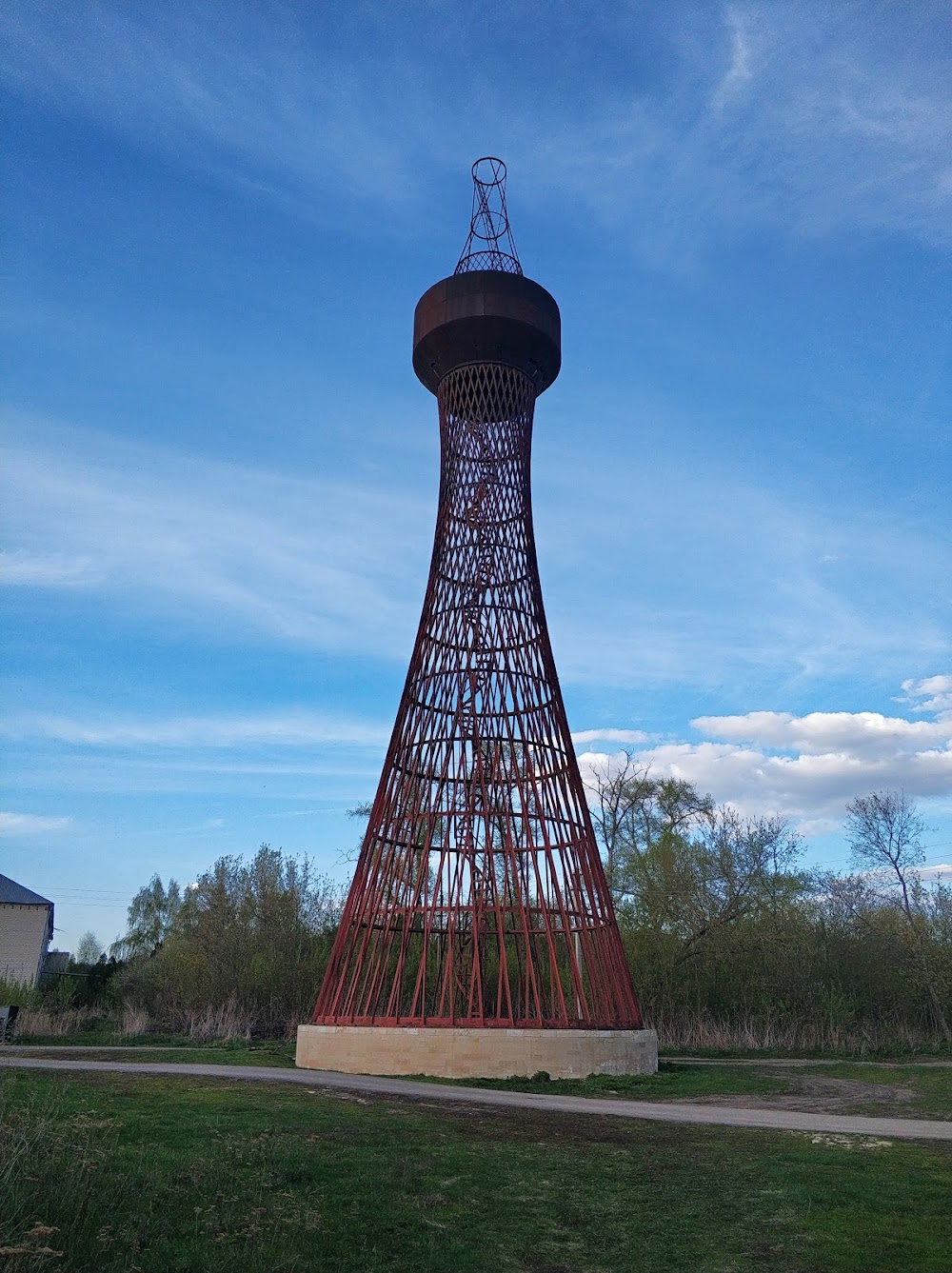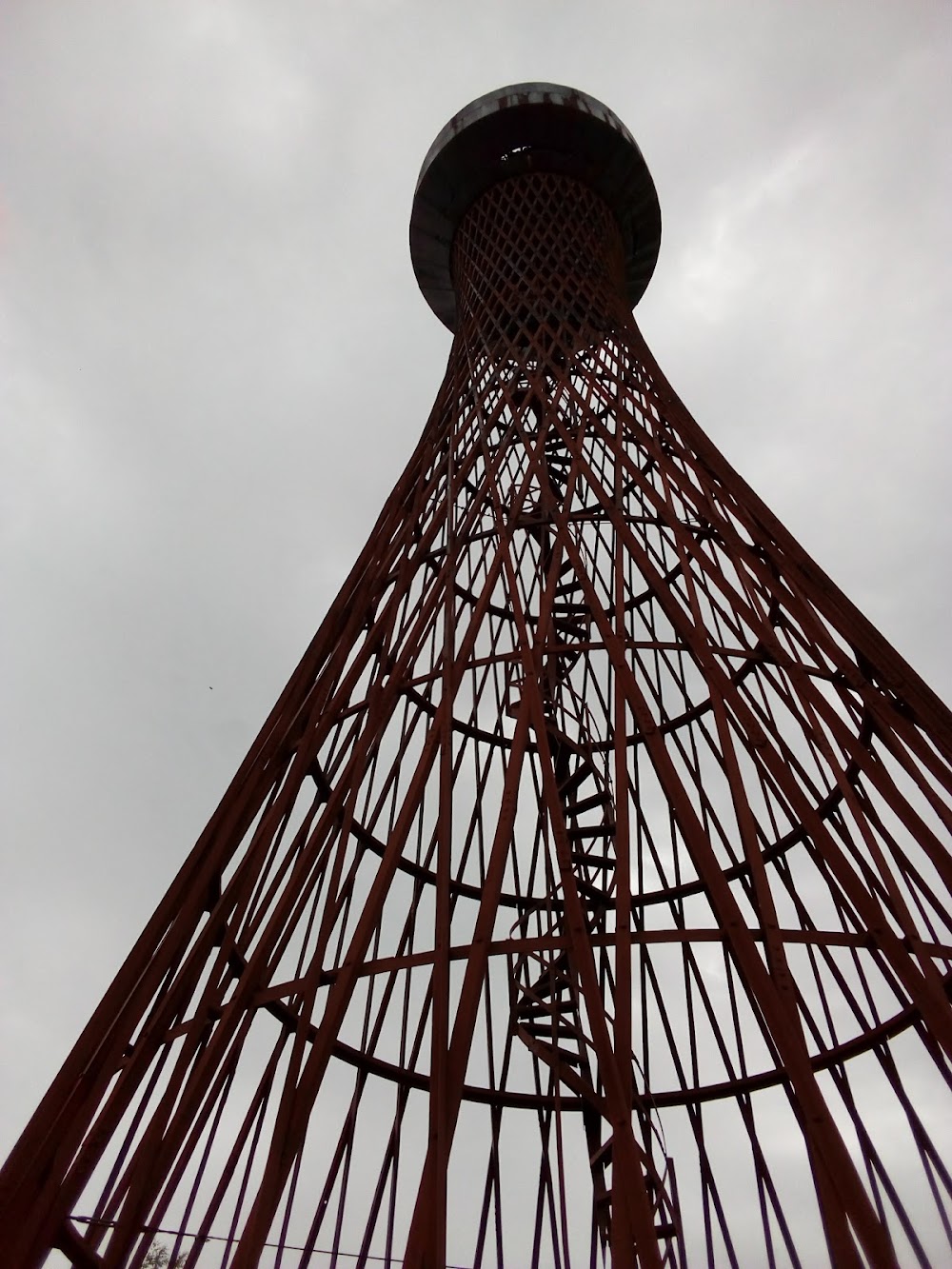Polibino Tower (Полибинская башня)
Overview
Discovering Shukhovskaya Bashnya
Shukhovskaya Bashnya, popularly known as the Shukhov Tower, is an extraordinary engineering feat nestled in the serene village of Polibino, located within the Lipetsk Oblast region of Russia. Designed by the illustrious Russian engineer Vladimir Shukhov, this remarkable structure was constructed between 1896 and 1897. The Shukhov Tower is a stunning example of hyperboloid architecture, a groundbreaking design that Shukhov not only pioneered but also applied to various industrial and architectural projects throughout his career.
The Tower's Purpose and Design
Originally built to serve as a water supply system for the estate of Count Sergei Alexandrovich Stroganov, the Shukhov Tower stands tall at 37 meters with a diameter of 10 meters. Crafted entirely from steel, it represents one of the earliest instances of modern architecture that embraced metal frameworks. The tower is particularly noted for its intricate lattice shell—an innovative approach at the time that minimized material usage and reduced weight while still maintaining strength and stability.
Engineering Ingenuity
Shukhov's meticulous planning and profound grasp of geometric forms played a crucial role in the design and construction of the Polibino Tower. By utilizing a network of straight steel beams arranged in a grid pattern, he achieved the hyperboloid shape, which is renowned for its strength and efficiency. This lattice shell technique enabled the tower to withstand various stresses, including wind loads and the significant weight of the water it was intended to hold.
Construction Journey
Construction commenced in the winter of 1896, with steel components prefabricated in a workshop and subsequently transported to the site. Workers skillfully erected the framework, meticulously aligning each segment to uphold the tower's precise geometry. Despite the challenges posed by the harsh Russian winter, the project proceeded seamlessly, culminating in the tower's completion by the summer of 1897.
Legacy and Influence
One of the most captivating aspects of Shukhov’s design is its lasting impact on subsequent architectural and engineering projects. The hyperboloid structure not only provided a stable and efficient solution for the Polibino estate but also paved the way for future innovations in civil engineering and architecture. Shukhov's pioneering work on lightweight and durable structures has inspired modern buildings and towers around the globe.
A Symbol of Innovation
Over the years, the Shukhov Tower has transcended its original functional purpose, evolving into a historical monument that showcases Shukhov’s visionary approach to engineering. Despite facing neglect and threats of demolition, the tower has persevered, thanks to the dedicated efforts of preservationists who recognized its cultural and architectural significance.
Visiting the Shukhov Tower Today
Today, the Shukhov Tower in Polibino stands as a beacon of innovation and the pioneering spirit in engineering. Although it no longer serves its original function, it attracts visitors and architecture enthusiasts from around the world, eager to witness firsthand the brilliance of one of the greatest engineers of the 19th century. The tower remains an iconic landmark in Lipetsk Oblast, illustrating the timelessness of Shukhov's designs and the lasting impact of his work on modern engineering and architecture.







